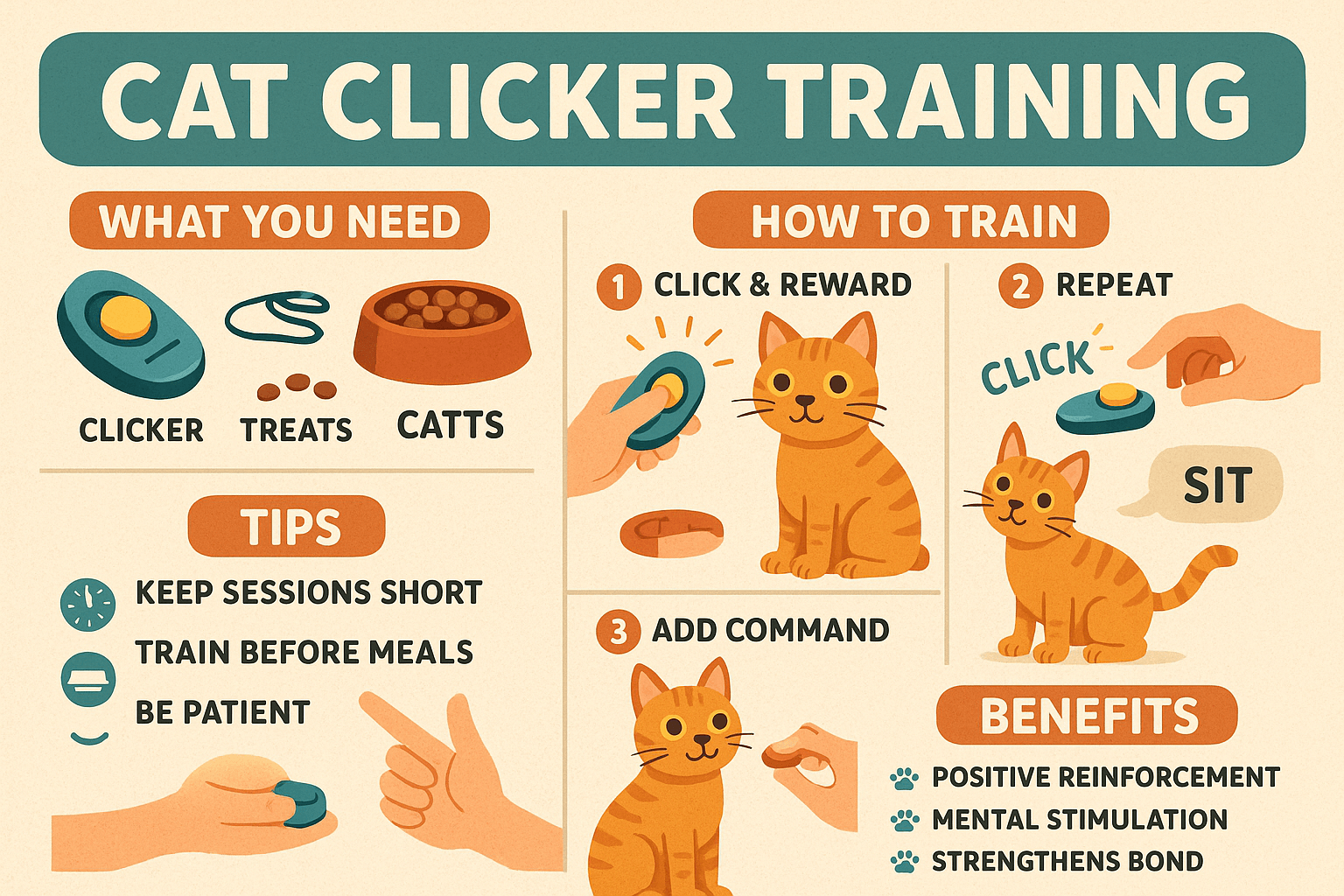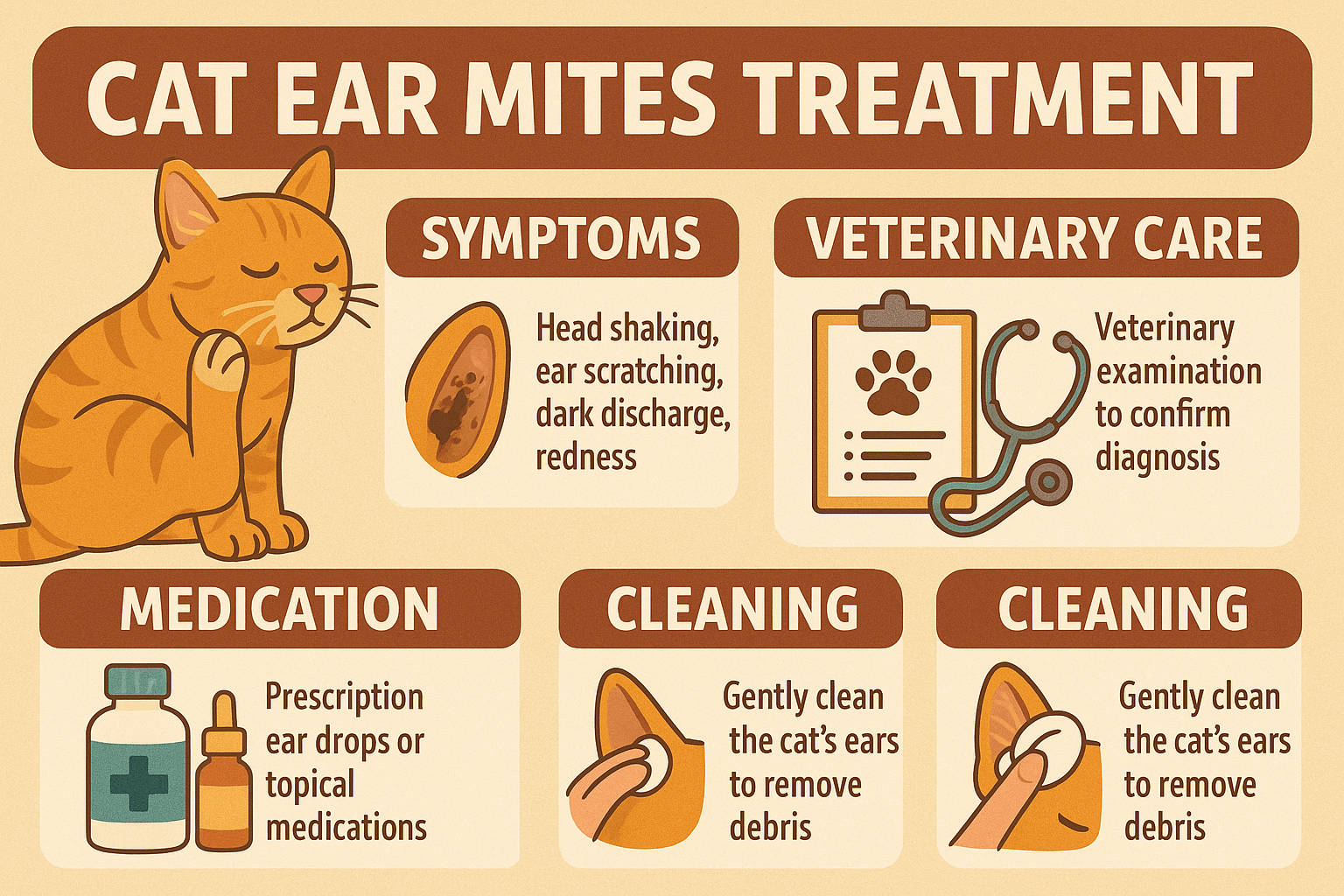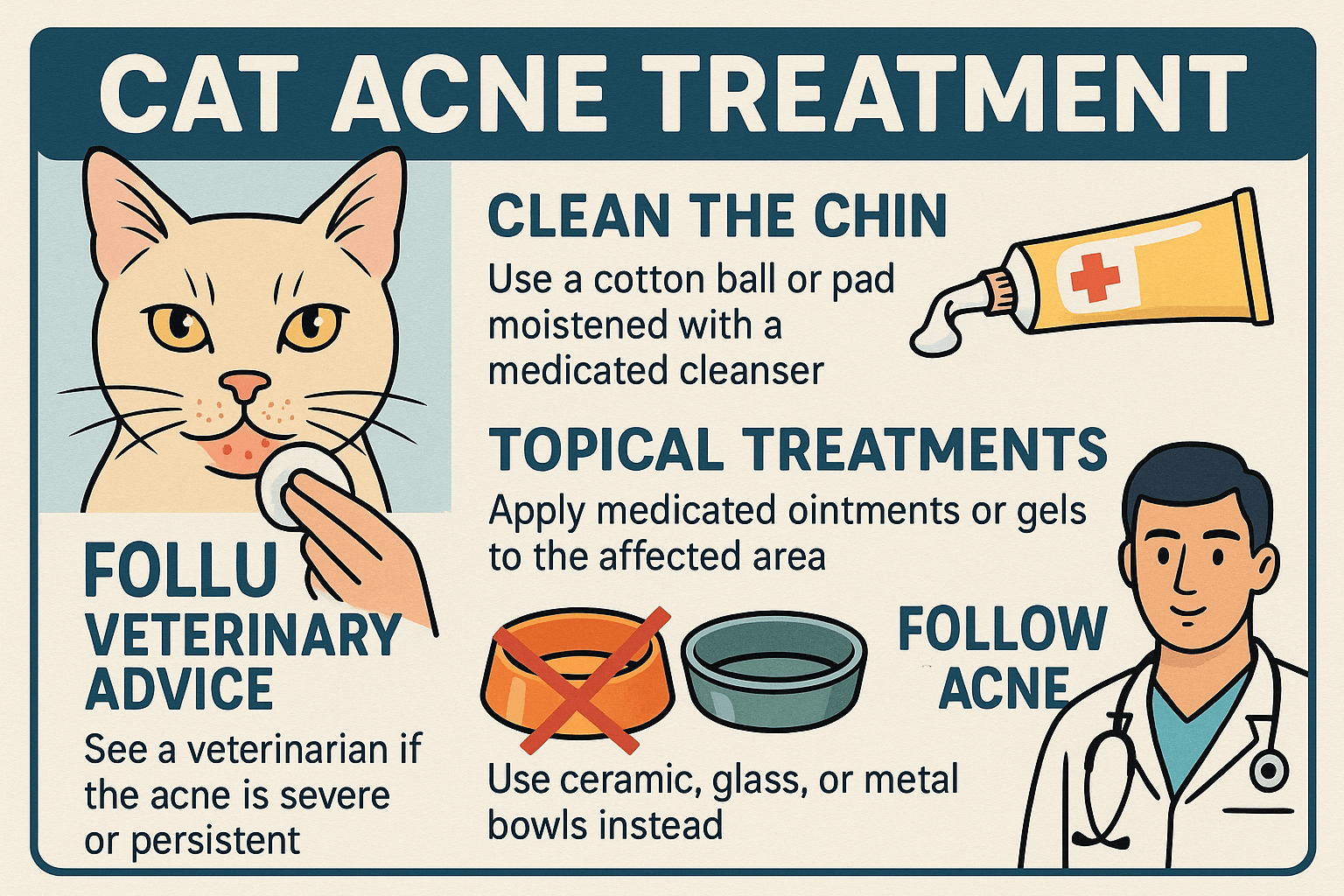How Do Cats Get Ear Mites? Understanding the Causes and Prevention
Ear mites are tiny parasites that can wreak havoc on your cat’s ears, causing irritation, discomfort, and even more serious health issues if left untreated. These pesky critters are highly contagious and can spread quickly between cats—and sometimes even to other pets. But how do cats get ear mites in the first place? Understanding the causes and risk factors is the first step toward protecting your feline friend from these unwelcome invaders. In this blog post, we’ll explore everything you need to know about how cats contract ear mites, how to recognize the signs of an infestation, and what you can do to prevent and treat them. Let’s dive in and ensure your cat stays happy, healthy, and mite-free!
Common Ways Cats Contract Ear Mites
Ear mites are highly contagious and thrive in environments where cats interact closely with one another or with other animals. Here are some of the most common ways cats can pick up these troublesome parasites:
Direct Contact with Infested Animals
Cats often contract ear mites through close contact with other infected cats, dogs, or small mammals like rabbits.Sharing Bedding or Toys
Using shared bedding, blankets, or toys that have been in contact with an infested animal can transfer mites to your cat.Visiting Multi-Cat Environments
Places like shelters, boarding facilities, or outdoor areas where multiple cats gather can be hotspots for ear mite transmission.Outdoor Exposure
Cats that spend time outdoors may encounter wildlife or stray animals carrying ear mites.Poor Hygiene Practices
Failing to clean your cat’s ears regularly or neglecting grooming can make them more susceptible to infestations.
By understanding how ear mites spread, you can take proactive steps to minimize your cat’s exposure. Prevention is key to keeping these parasites at bay.
Symptoms of Ear Mites in Cats
Recognizing the signs of ear mites early can help you address the issue before it worsens. Here are some common symptoms to watch for if you suspect your cat has ear mites:
Excessive Scratching
Cats with ear mites often scratch their ears intensely due to the itching and irritation caused by the parasites.Head Shaking
Frequent head shaking is a telltale sign that your cat is trying to relieve discomfort in their ears.Dark, Crumbly Ear Discharge
A buildup of dark, coffee-ground-like debris in the ears is a classic symptom of ear mites.Redness or Swelling
Inflammation around the ear canal or outer ear may indicate an ear mite infestation.Unpleasant Odor
A foul smell emanating from your cat’s ears can signal an infection caused by ear mites.
If you notice any of these symptoms, it’s important to consult your veterinarian for a proper diagnosis and treatment plan. Early intervention can prevent complications like secondary infections.
Check this guide 👉Cat Ear Mites vs Wax: Best 7 Expert Tips!
Check this guide 👉Cat Ear Anatomy: Best 7 Health Tips!
Check this guide 👉Cat Ear Infection Symptoms: Best 7 Health Tips!

How Cats Get Ear Mites | Symptoms of Ear Mites in Cats |
|---|---|
Direct contact with infested animals | Excessive scratching |
Sharing bedding or toys | Head shaking |
Visiting multi-cat environments | Dark, crumbly ear discharge |
Outdoor exposure to wildlife or stray animals | Redness or swelling in the ear |
Poor hygiene practices | Unpleasant odor from the ears |
Steps to Prevent Ear Mites in Cats
Preventing ear mites is far easier than dealing with an infestation. By taking a few simple precautions, you can significantly reduce your cat’s risk of contracting these parasites. Here are some effective prevention strategies:
Regular Ear Cleaning
Gently clean your cat’s ears with a vet-recommended solution to remove dirt and debris that could harbor mites.Limit Exposure to Stray Animals
Keep your cat indoors or supervise outdoor time to minimize contact with stray or wild animals.Avoid Shared Items
Do not allow your cat to share bedding, toys, or grooming tools with other animals unless they are parasite-free.Routine Vet Check-Ups
Schedule regular veterinary visits to monitor your cat’s ear health and catch any issues early.Maintain a Clean Environment
Wash your cat’s bedding and toys frequently to eliminate any potential mites or eggs.
By incorporating these preventive measures into your routine, you can help keep your cat’s ears healthy and free from mites. A little effort goes a long way in safeguarding your pet’s well-being.
Treatment Options for Ear Mites in Cats
If your cat has been diagnosed with ear mites, there are several effective treatment options available. Your veterinarian will recommend the best course of action based on the severity of the infestation. Here are some common treatments:
Topical Medications
Medicated ear drops or ointments are often prescribed to kill mites and soothe irritation.Oral Medications
In some cases, oral medications may be used to target mites systemically throughout the body.Cleaning the Ears
Thorough cleaning of the ears helps remove debris and mites, improving the effectiveness of treatments.Environmental Cleaning
Washing bedding, vacuuming carpets, and disinfecting surfaces can prevent reinfestation.Follow-Up Care
Repeat treatments or vet visits may be necessary to ensure all mites and eggs are eliminated.
With proper treatment and care, most cats recover fully from ear mites. Always follow your veterinarian’s instructions for the best results.
Common Misconceptions About Ear Mites in Cats
There are several myths and misconceptions about ear mites that can lead to confusion or improper treatment. Clearing up these misunderstandings is essential for effective care. Here are some common misconceptions and the truth behind them:
Myth: Ear mites only affect outdoor cats.
In reality, indoor cats can also contract ear mites if they come into contact with infested animals or contaminated items.Myth: Ear mites cause permanent damage to hearing.
While ear mites can irritate the ears, they do not cause permanent hearing loss if treated promptly and properly.Myth: Over-the-counter treatments are always effective.
Some over-the-counter products may not fully eliminate mites or address secondary infections, so veterinary guidance is crucial.Myth: Ear mites are the only cause of itchy ears in cats.
Other conditions, like allergies or bacterial infections, can also cause similar symptoms and require different treatments.Myth: A single treatment is enough to get rid of ear mites.
Ear mite eggs can survive even after initial treatment, so multiple applications are often necessary to completely eradicate them.
Understanding the facts helps ensure proper care and prevents unnecessary worry. Always consult a vet for accurate diagnosis and treatment.
Fun Facts About Cat Ears and Their Health
Cat ears are fascinating structures that play a vital role in their overall well-being. Learning more about them can help you appreciate your cat’s unique biology. Here are some fun and interesting facts about cat ears:
Cats Have Exceptional Hearing
Cats can hear higher frequencies than humans and dogs, making their ears incredibly sensitive to sound.Ears Help Regulate Body Temperature
Cats use their ears to dissipate heat, which is why their ears often feel warm to the touch.Each Ear Can Move Independently
A cat’s ears can rotate up to 180 degrees, allowing them to pinpoint the exact location of sounds.Ear Position Indicates Mood
Flattened ears often signal fear or aggression, while relaxed ears suggest contentment.Regular Cleaning Prevents Issues
Routine ear cleaning reduces the risk of infections, mites, and other ear-related problems.
These fun facts highlight the importance of caring for your cat’s ears. By keeping them clean and healthy, you’re supporting their overall well-being and enhancing their quality of life.
Signs That Your Cat’s Ear Treatment Is Working
When treating ear mites, it’s important to monitor your cat’s progress to ensure the treatment is effective. Here are some positive signs that indicate your cat’s condition is improving:
Reduced Scratching
If your cat is scratching their ears less frequently, it’s a good sign that the mites are being eliminated.Clearer Ear Discharge
A decrease in dark, crumbly debris indicates that the ear canal is becoming cleaner.Less Head Shaking
Fewer episodes of head shaking suggest reduced irritation and discomfort.Improved Appetite and Energy
As your cat feels better, they may regain their appetite and return to their playful self.No Unpleasant Odor
The absence of a foul smell from the ears signals that the infection or infestation is resolving.
These signs are encouraging and show that your efforts are paying off. However, always complete the full course of treatment as prescribed by your veterinarian to ensure all mites and eggs are gone.
Frequently Asked Questions About Ear Mites in Cats
Can humans get ear mites from cats?
While rare, humans can develop skin irritation from ear mites, but they cannot survive in human ears.
Are ear mites dangerous for cats?
Ear mites themselves are not life-threatening, but they can cause secondary infections if left untreated.
How long does it take to treat ear mites?
Treatment typically lasts 2-4 weeks, depending on the severity of the infestation.
Can indoor cats get ear mites?
Yes, indoor cats can contract ear mites if they come into contact with infested animals or contaminated items.
What should I do if my cat keeps getting ear mites?
Consult your vet to rule out underlying health issues and ensure thorough environmental cleaning.
Keeping Your Cat Comfortable and Mite-Free
Ear mites may be small, but their impact on your cat’s comfort and health can be significant. By understanding how cats get ear mites, recognizing the symptoms, and taking preventive measures, you can protect your feline companion from these pesky parasites. Remember, early detection and treatment are essential for minimizing discomfort and preventing complications. With regular care, a clean environment, and prompt veterinary attention when needed, you can ensure your cat enjoys a happy, healthy, and mite-free life. After all, a contented cat makes for a joyful home!
Cat Clicker Training: Best 7 Expert Tips! Discover how to train your cat using clicker techniques, improve behavior, and strengthen your bond with simple, effective strategies.
Lorem ipsum dolor sit amet, consectetur adipiscing elit. Ut elit tellus, luctus nec ullamcorper mattis, pulvinar dapibus leo.
Cat Ear Mites Treatment: Best 7 Expert Tips! Discover effective solutions to treat and prevent ear mites in cats, ensuring your pet's comfort and health with expert advice.
Cat Acne Treatment: Best 7 Expert Tips! Discover effective remedies, prevention strategies, and expert advice to treat and manage feline acne for a healthier, happier cat.




